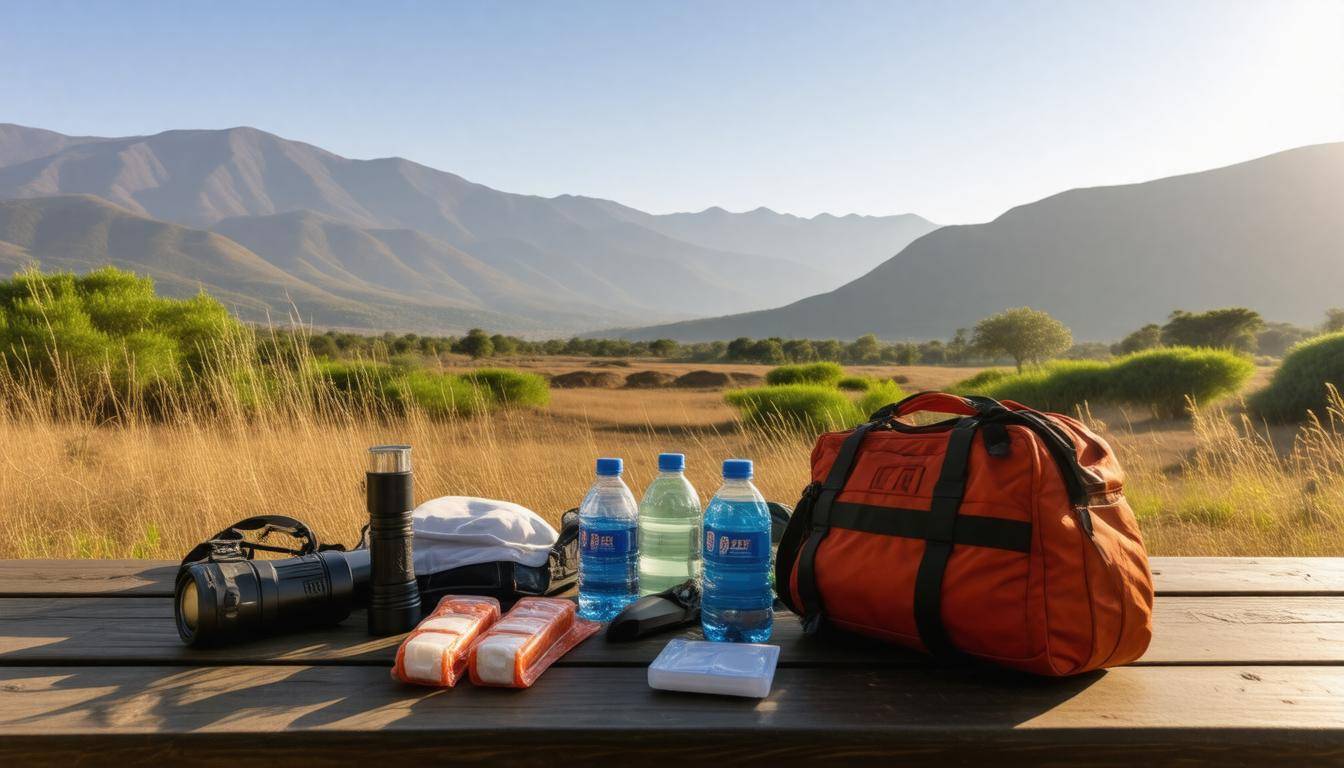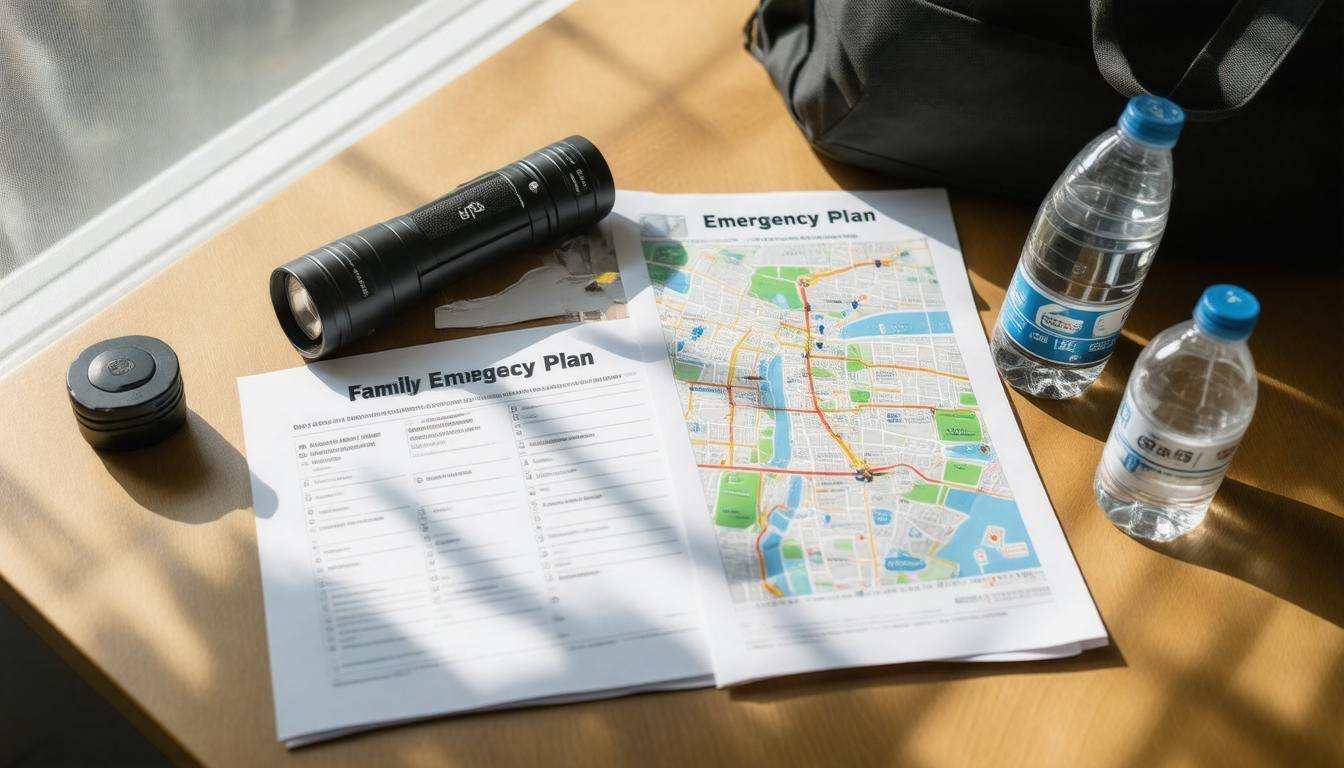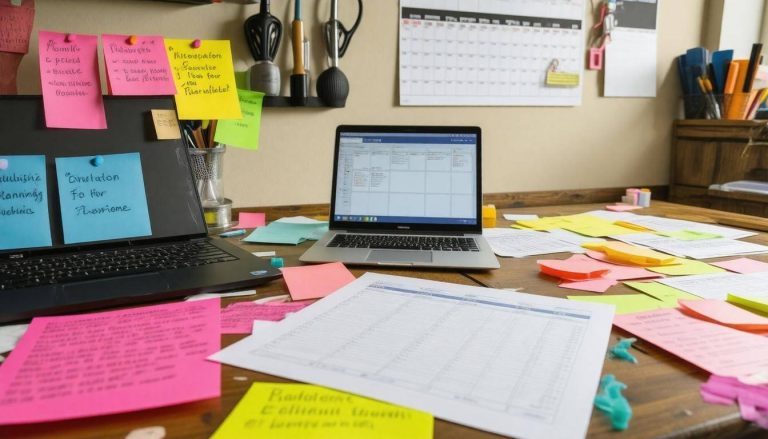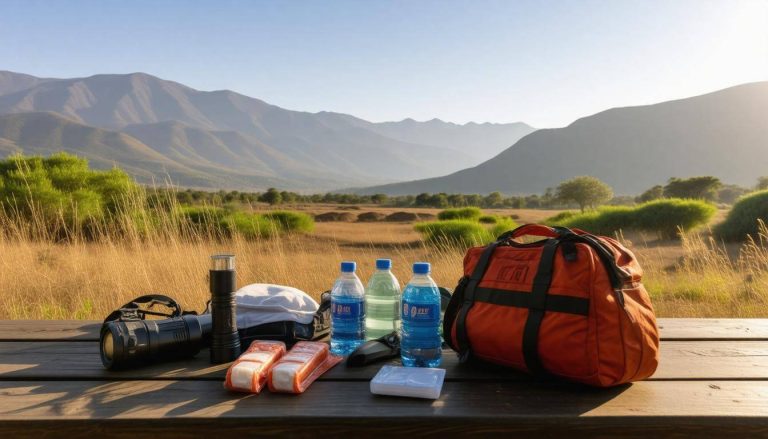When it comes to natural disasters, earthquakes can be especially unpredictable and frightening for those living in areas like Kyoto. Imagine being jolted awake in the middle of the night by the ground shaking beneath your feet—it’s a feeling that leaves even the bravest among us feeling uneasy. Preparing for such an event, however, doesn’t have to be overwhelming. By gathering a simple earthquake readiness supply list, you can take important steps to safeguard yourself and your family. In this guide, we’ll outline essential items to include in your emergency kit, practical tips for staying informed during a crisis, and strategies to ensure your family’s safety in the face of potential chaos. So let’s dive into effective preparations that bring comfort and confidence when it’s needed most!
A comprehensive Kyoto Earthquake Readiness Supply List should include non-perishable food and bottled water sufficient for at least three days, a first aid kit, portable radios with extra batteries, necessary medications, and emergency lighting such as flashlights and lanterns. Additionally, it’s important to stay informed through official channels for timely updates during emergencies.

Building Your Earthquake Preparedness Kit
In Kyoto, where the risk of earthquakes looms large, having a well-prepared emergency kit is not just a precaution; it’s essential for survival. When assembling this kit, expect to gather supplies that will sustain you and your loved ones for at least three days. This means including non-perishable food items such as canned beans, energy bars, and dried fruits that are easy to store and provide necessary energy without requiring cooking.
You should also pack a gallon of water per person per day to ensure hydration and sanitation needs are met. Just imagine being in a situation after an earthquake where clean drinking water is scarce; an adequate supply can make all the difference.
Beyond food and water, consider the emotional aspect of such an experience. Having your prepared kit can give you peace of mind before an earthquake even strikes. You’ve already taken steps to protect yourself, making you feel composed amidst chaos.
Picture yourself calmly checking off your list as you pack a flashlight with extra batteries—something crucial when the power grid goes down. An LED flashlight is preferred due to its long battery life and durability, which can be especially comforting during uncertain times.
Practical Items You Might Overlook
- A whistle may seem like a trivial addition, but it serves a significant purpose if you need to signal for help after an earthquake. A deep breath and a clear sound could be all it takes to attract attention.
- Dust masks could save you from inhaling harmful dust or debris following structural damage around your home. Keeping one handy can protect your lungs amid potential chaos.
- Plastic sheeting and duct tape may sound odd, but think of them as tools for creating makeshift shelter if necessary—essentially allowing you to control your environment during aftershocks.
- A battery-powered or hand-crank radio is not merely for entertainment; it’s your connection to the outside world when cell phones might fail. Staying informed with updates on safety measures can guide your decisions during a crisis.
While these are fundamentals for physical survival, ensuring effective communication tools will further enhance your preparedness and coordination with others during emergencies.
Emergency Communication Tools
In the wake of a natural disaster, having effective communication tools ready is critical. You need reliable ways to receive updates from local authorities as well as the ability to contact family members. Even if electronic devices fail, there are alternatives that should be part of your emergency communication strategy.
T.C.C.O.R System
One effective system to become familiar with is the Tropical Cyclone Condition of Readiness (TCCOR). While originally designed for typhoons, its application can also be beneficial during earthquakes. The TCCOR system has levels ranging from Four, which signifies that preparations for destructive winds should begin, down to One, indicating immediate action is required due to ongoing emergencies. This level-based approach enables residents to quickly grasp the urgency of a given situation.
It’s essential to stay updated on the current TCCOR level through reliable sources such as local authorities or news outlets. Many of these organizations share regular updates on social media platforms, keeping you informed without needing to rely solely on traditional radio or TV broadcasts. Signing up for text alerts from Kyodo News or your local municipal office can keep you in the loop, especially during an emergency.
A well-informed community is often better prepared to respond resiliently when disaster strikes.
Practical Communication Tools
Your list of essential communication tools should include items like battery-operated radios and flashlights with extra batteries, which are crucial for receiving information about public safety and emergency instructions. Additionally, consider investing in walkie-talkies or other two-way radios. These devices can enable communication between family members even when cellular networks are overloaded or down.
Alternative Methods
It’s prudent to prepare for situations where technology fails. Develop a communication plan that includes meeting points for family members if you’re separated during an earthquake. For example, choose a specific landmark where everyone should gather after ensuring their immediate safety. These plans might seem simplistic but can significantly reduce confusion after shaking stops.
While these tools are great, it’s also beneficial to teach your family basic signaling techniques—like using whistles or reflective mirrors—for times when voice communication isn’t feasible. This knowledge could be invaluable if you find yourself in crowded places post-earthquake.
As we shift focus towards methods of ensuring safety and protection in uncertain times, remember that readiness encompasses both communication strategies and the right supplies.
Shelter and Safety Essentials
When an earthquake strikes, the first instinct is often to seek safety. This makes having a reliable shelter system essential. You need protection from the quake itself and from the elements that can follow. For this reason, including a durable tent in your emergency kit is paramount. A lightweight, portable tent can swiftly transform any space into a safe haven for you and your loved ones, accommodating two to four people comfortably.
Alongside the tent, consider adding thermal blankets and sleeping bags to your kit. These items will help retain body heat in chilly conditions, ensuring comfort during potentially prolonged periods of uncertainty. It’s also wise to remember that materials like thermal reflective blankets can retain up to 90% of body heat, providing extra warmth without taking up much space in your emergency gear.
Remember, while comfort is essential during times of stress, prioritizing safety over sheer convenience is crucial.
Prioritizing Safety Over Comfort
The reality of being prepared means recognizing the dangers after a quake. Having sturdy gloves to protect your hands from sharp debris or other hazards may seem like a small detail, but it’s important. Similarly, a helmet can protect your head during situations where loose items could fall due to aftershocks or structural weaknesses.
Think ahead: even basic tools such as a whistle can be invaluable for signaling help should you find yourself in need of assistance. A survival whistle can clearly be heard up to a mile away, making it easier for rescuers to locate you if necessary.
Ensuring the safety of every family member is crucial when preparing for natural disasters.
Family Safety Preparations
It’s not just about having supplies; it’s about making certain everyone in your household—including pets—has their own gear ready to go at a moment’s notice. If children are part of the household, packing comforting items like a favorite toy or blanket can provide emotional support during stressful times—just ensure these items won’t occupy too much space in your emergency pack.
While comforting each family member is vital, don’t forget your four-legged friends! Having pet food, water, and any necessary medical supplies specifically for pets shows thoughtful preparation and fosters a sense of security amidst chaos.
As we continue exploring essential preparations, health and first aid items must be prioritized within any comprehensive emergency plan.
Health and First Aid Supplies

In the turmoil of an earthquake, the ability to respond quickly to injuries can be crucial. Well-stocked health and first aid supplies are essential. Imagine you’re amidst shaking walls and falling debris; every second counts when it comes to treating wounds or managing discomfort. The key to being ready for any situation lies in having a comprehensive first aid kit that addresses both minor injuries and potential medical issues.
First Aid Kit Essentials
-
Bandages are non-negotiable. Basic adhesive bandages should be included for minor cuts and scrapes, while larger gauze pads are essential for covering medium wounds. Think of them as your friendly shield against infection.
-
Antiseptic wipes provide a clean slate for treating injuries. Keeping these handy ensures that you can clean wounds thoroughly before applying any dressings, decreasing the chances of complications later on.
-
Ointments help protect wounds and promote healing. A good antibiotic ointment can reduce the risk of infection and speed up recovery.
-
It’s smart to pack enough prescription medications to last at least one week, ensuring you won’t run out when you need them most. Make sure to check and rotate them regularly so they’re always current.
-
Don’t overlook over-the-counter pain relievers like ibuprofen or acetaminophen. Pain management is a major aspect of health care in any scenario.
Beyond just the basics, include educational materials that empower you or those around you to make swift decisions during a crisis.
Having a manual on basic first aid techniques can be invaluable. This guide can serve as an immediate source of information on how to handle various situations—from performing CPR to treating burns or sprains. With it, even someone without professional training can respond effectively under pressure.
Lastly, remember the importance of personal hygiene in maintaining overall health in emergencies. Stocking up on items like hand sanitizers and disinfectants will not only help manage injuries but also reduce the risk of infection by keeping hands clean before and after treatment.
As we prepare for unexpected events, consider how critical it is to ensure all your important documents are organized and accessible when needed most.
Managing Important Documents
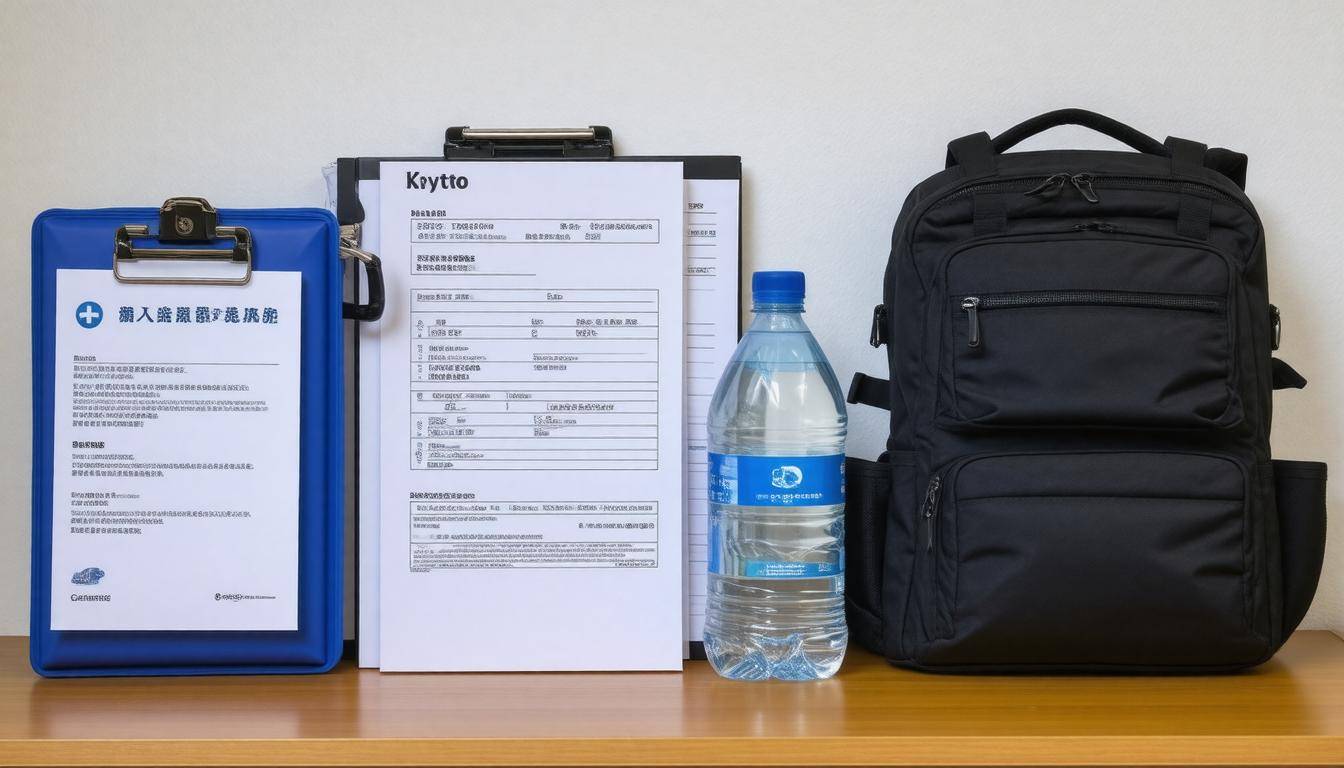
Losing essential documents can exacerbate the crisis post-quake. Imagine that after a devastating earthquake, the last thing you want to deal with is trying to replace critical documentation while managing increased levels of stress and uncertainty. By taking proactive steps to safeguard your papers, you empower yourself and your family during a potentially tumultuous time.
Document Storage Solutions
To mitigate these risks, keep copies of identification, insurance policies, medical records, and bank account information in a waterproof and fireproof document bag. This will serve as your first line of defense.
Consider using an array of documents you may need; this might include scans of your passport, driver’s license, health insurance card, vaccination records, and any other vital paperwork necessary in an emergency.
Additionally, it is wise to store digital copies on a portable USB drive; however, never forget how important security is in the digital age. Make sure the USB drive is encrypted to protect sensitive data from unauthorized access. This dual approach—both physical and digital—ensures that you have access to crucial items regardless of the circumstances.
Moreover, it’s a good idea to create a checklist of important documents and regularly review this list every six months. Including reminders for newly required documents like school registration or changing medical information can make this process more manageable. Forgetting to update these files could mean not having the most current information available when you need it most.
In times of crisis, communication can also be hampered. Make sure emergency contacts are documented alongside essential family information so loved ones know who to reach out to or contact on your behalf if needed.
The next step in preparing for emergencies involves ensuring that all family members are informed about safety protocols and procedures to follow during a disaster.
Ensuring Family Safety
Keeping your family safe during an earthquake entails more than just having supplies on hand; it requires creating clear communication and planning processes that everyone understands. Developing an emergency plan that outlines what to do when the ground starts shaking can significantly ease anxiety in your household.
This plan should include designated meeting points, methods of communication, and specific roles assigned to each family member during an emergency. Everyone should have clarity on their responsibilities, fostering a sense of unity and purpose.
Drills and Plans
Frequently conducting earthquake drills as a family is crucial for reinforcing your emergency plan. It’s not enough just to write down the steps; these procedures should be practiced regularly. During these drills, ensure every family member knows where the emergency kit is stored, how to safely shut off utilities like gas and electricity, and the established meeting point in case you get separated amidst the chaos. Families who take this approach often report feeling significantly more confident and less panicked during actual emergencies. The reassurance that comes from having a solid plan cultivates composure and allows room to think clearly amidst uncertainty.
Another vital aspect of ensuring safety is identifying safe spots within each room of your home. Designating areas such as underneath sturdy furniture or against interior walls provides a refuge from falling debris or other hazards. These zones should be communicated clearly during your drills so that everyone instinctively knows where to go when necessary. Knowledge of safe spots can mean the difference between safety and injury during an earthquake.
Remember: The more practiced and prepared your family is, the better you will respond when an earthquake strikes.
Transitioning from immediate preparedness, it’s also crucial to explore essential items that will support long-term safety and survival in the wake of significant emergencies. This comprehensive preparation can make all the difference for your family’s resilience in challenging times.
Long-Term Survival Items
When preparing for the unexpected, stockpiling survival supplies is crucial. It goes beyond having enough food and water for a short period; being ready means thinking about sustaining yourself over weeks or even months. Non-perishable foods are a must, especially options like freeze-dried or dehydrated meals, which take up minimal space while providing essential nutrients.
Just remember, you’ll need a way to prepare these meals during emergencies, so incorporating a portable gas stove with extra fuel canisters into your kit is incredibly wise. Imagine relying on cold rations for days; a warm meal can vastly change your morale in challenging times.
In addition to food preparation items, consider investing in solar chargers for your electronics. These can ensure you remain connected and informed about emergency updates or instructions from local authorities. In our unpredictable world, every bit of information can be invaluable.
Water purification tablets also deserve attention; access to clean drinking water may become limited during an earthquake’s aftermath, and having a reliable method to treat water will safeguard your health.
Seeds for growing food might also cross your mind; while they require time and resources to cultivate, the ability to produce fresh vegetables or herbs later is a powerful asset against uncertainty. Picture yourself nurturing small plants in an improvised garden, an act that brings routine and hope amid chaos.
Equally important as the physical items in your kit is acknowledging the need for mental well-being during stressful situations. Maintaining social connections with family members or friends—even if it’s through messages or voice calls—can provide significant emotional support when the chips are down.
Take care of each other as you weather the storm together; sometimes, simply sharing stories or talking about daily life can bring comfort when the world outside feels daunting.
With practical items checked off your list, it becomes essential to focus on the mental aspect of preparedness, ensuring you and your loved ones are equipped to handle challenges that arise during emergencies.
Mental Preparedness Tips
Mental resilience is indeed a vital aspect of preparedness that often gets overshadowed by physical preparations. It’s easy to focus solely on gathering emergency kits and food stores, but our mental state significantly affects how we cope during and after a disaster. Investing in mental preparedness enhances individuals’ capacity to respond effectively and recover more quickly from the emotional toll of an earthquake.
Techniques to Stay Calm
One effective method for maintaining tranquility amid chaos is through mindfulness practices. Engaging in mindfulness helps ground you and keep anxiety at bay; this can be as simple as focusing on your breath. When the earth trembles beneath you, taking slow, deep breaths creates a soothing effect, allowing you to think more clearly and react appropriately.
Many find that dedicating just five minutes each morning for mindfulness or meditation significantly boosts their stress management skills, preparing them for the unexpected.
Creating a daily routine can improve your mental health tremendously. Engage in light exercises such as yoga or stretching, which strengthen your body and calm your mind. This practice has been shown to produce endorphins, the body’s natural mood elevators, acting as a protective buffer during stressful times. Keeping a journal helps articulate feelings and track thoughts over time; many survivors have noted the cathartic release writing provides.
The Power of Community
Community engagement further amplifies this mental preparation process. Joining local preparedness groups fosters connections with neighbors who share concerns about natural disasters. It’s comforting to know you’re not alone in facing potential dangers; discussing fears and tactics solidifies bonds and builds mutual support systems. Collaborations within these groups sometimes lead to organized drills where participants practice responses, enhancing everyone’s confidence.
Having honest conversations about potential earthquake scenarios with loved ones proves beneficial. Discuss what actions everyone would take should an earthquake strike—where to meet if separated or how to communicate without traditional means—solidifying plans reinforces a sense of control over an otherwise unpredictable situation.
Research indicates that communities with active disaster preparedness networks tend to recover from disasters faster because collective resilience plays a significant role in coping during crises.
Lastly, remember that reinforcing mental preparedness doesn’t stop at individual readiness; visual reminders scattered around shared family spaces serve as excellent prompts for safety procedures and emergency contact lists.
In summary, nurturing both mental resilience and community ties builds a robust foundation for facing potential disasters like earthquakes head-on. By preparing not just physically but also mentally, we equip ourselves with the tools needed to navigate challenges effectively.
